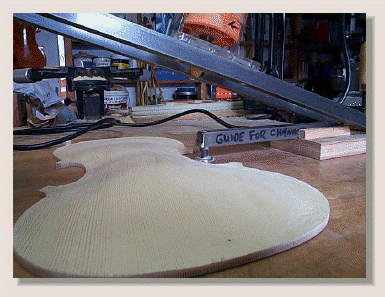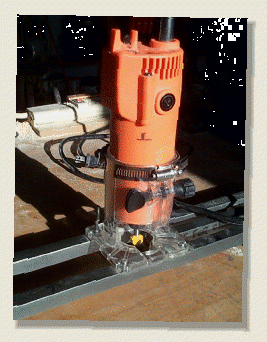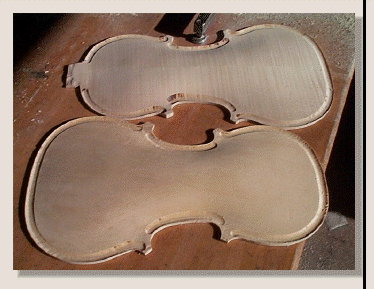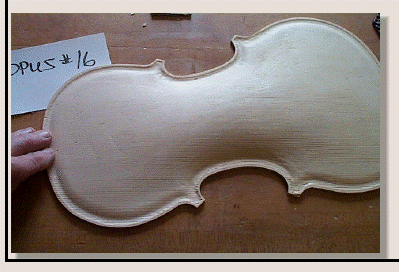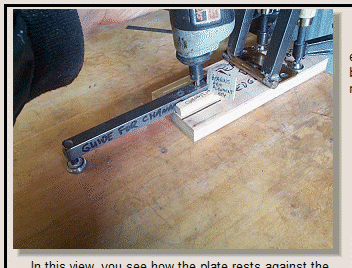This tool is first used to machine first the plate edge thickness. The plate edge thickness should be 5 mm (0.197") in the center bout area and 4 mm (0.158") for the rest of the plates surfaces.
In this view, you see how the plate rests against the bearing pivot. The small router holds the carbide cutter and is mounted on two steel rails which are hinged at one end.
This small high speed router is now mounted with the round bottom shape arbide cutter (5/8" in diameter) installed for the purfling channel machining.
The spinning cutter is lowered onto the plate and the plate is carefully fed in a clockwise direction (against the cutters rotation) while keeping the edge firmly against the guide bearing. This pulls the cutter against the guide bearing.
..The groove depth just inside the purfling should be 3.8 mm thick (0.150") [from bottom {inside} of plate to outside surface of the plates.
Here both plates have been machined. Notice that the area across the button (neck area) of the back plate and the corners can not be cut with the router, these must be hand finished.
In this view, I have used hand gouges to rough out the channel shape at the four corners.
Modified 9/2017
Page O16C_31


